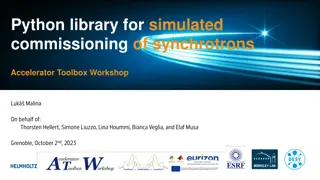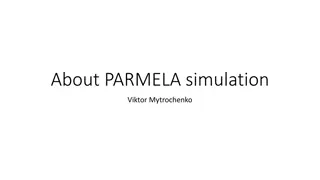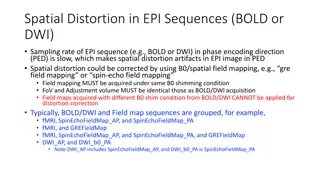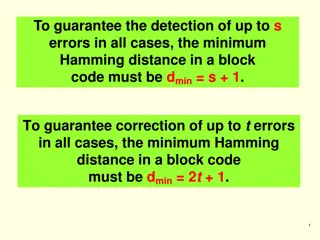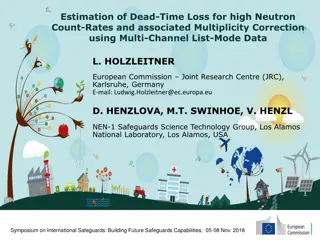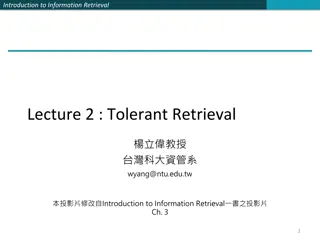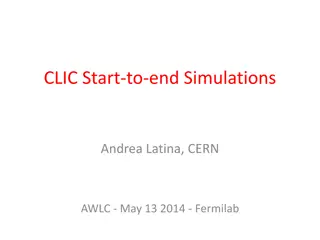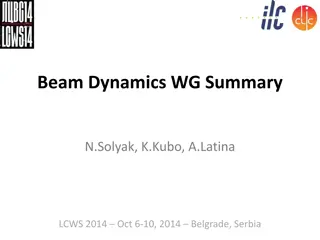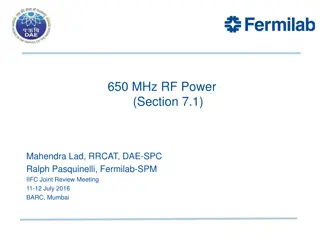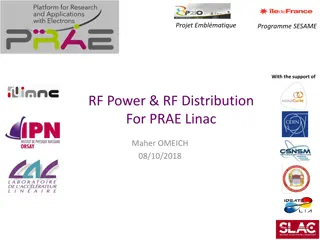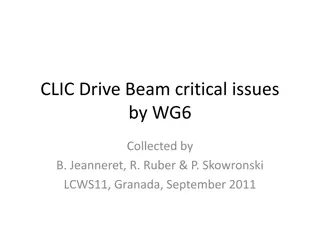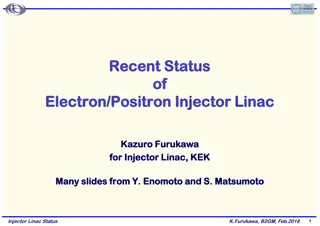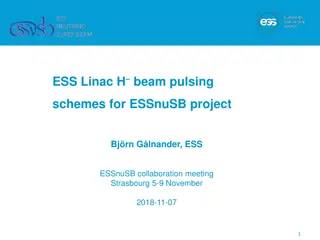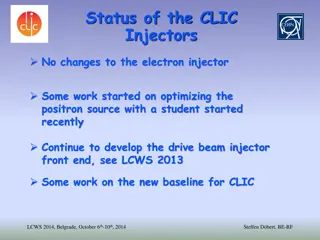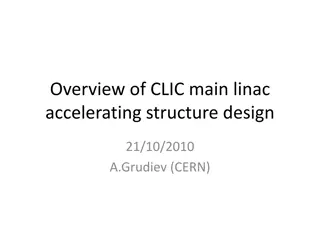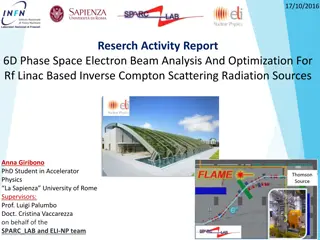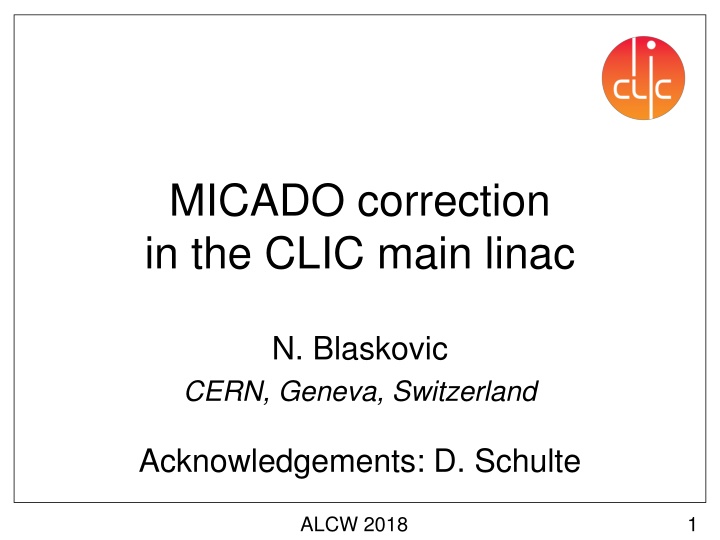
Optimizing Beam Orbit Correction with MICADO Routine
Learn about the MICADO routine for global orbit correction in the CLIC main linac, reducing setting errors and noise sources by selecting a subset of correctors. Gain insights on the response matrix, correction process, and emittance growth reduction in the linac. Explore MICADO simulations and literature references from ALCW 2018.
Download Presentation

Please find below an Image/Link to download the presentation.
The content on the website is provided AS IS for your information and personal use only. It may not be sold, licensed, or shared on other websites without obtaining consent from the author. If you encounter any issues during the download, it is possible that the publisher has removed the file from their server.
You are allowed to download the files provided on this website for personal or commercial use, subject to the condition that they are used lawfully. All files are the property of their respective owners.
The content on the website is provided AS IS for your information and personal use only. It may not be sold, licensed, or shared on other websites without obtaining consent from the author.
E N D
Presentation Transcript
MICADO correction in the CLIC main linac N. Blaskovic CERN, Geneva, Switzerland Acknowledgements: D. Schulte ALCW 2018 1
Contents Introducing the MICADO routine Emittance vs. MICADO iteration number Optimising gain, step size & number of correctors Effect of unavailable correctors & BPMs N. Blaskovic ALCW 2018 2
MICADO Typically, one-to-one correction uses all BPMs and all correctors However, the beam orbit only contains a few significant Fourier components The MICADO routine selects only a few correctors to perform a global orbit correction, thus reducing the number of setting errors and sources of noise N. Blaskovic ALCW 2018 3
MICADO The correctors used for orbit correction are displaced quadrupoles (thus introducing dipole kicks) The MICADO routine makes use of a ? ? response matrix that relates the effect of all ? correctors on all ? BPMs Study performed on the 380 GeV main linac, with 576 correctors & 576 BPMs N. Blaskovic ALCW 2018 4
MICADO Given the response matrix and the BPM measurements, the MICADO routine identifies the 10 correctors that best correct the distorted beam orbit The correctors are set and the MICADO routine is repeated for the next train, i.e., a new subset of 10 correctors is selected to perform the correction N. Blaskovic ALCW 2018 5
MICADO literature MICADO routine: B. Autin & Y. Marti, Closed orbit correction of A.G. machines using a small number of magnets , CERN-ISR-MA/73-17, 1973 MICADO simulations for the ILC: A. Latina, G. Rumolo, D. Schulte & R. Tomas, Feedback studies , proceedings of PAC 2007, Albuquerque, New Mexico, USA, pp. 2841 2843 N. Blaskovic ALCW 2018 6
Running MICADO Run ATL motion for 1 hour starting from a perfectly aligned machine Run MICADO for 100 consecutive iterations assuming no additional ground motion during this period Figure of merit is the reduction in the emittance growth in the linac versus MICADO iteration number N. Blaskovic ALCW 2018 7
Gain scan Plotting emittance growth in the main linac (i.e. subtracting the 10 nm emittance at the start of the linac) N. Blaskovic ALCW 2018 8
Correction gain A gain of 1 leads to the reduction in beam emittance in the fewest iterations, at the risk of introducing too much noise from BPM and corrector errors Start first assuming perfect BPM resolution and only 1 nm error in the corrector setting N. Blaskovic ALCW 2018 9
Gain scan Gain scan with perfect BPM resolution with 1 nm corrector setting error N. Blaskovic ALCW 2018 10
Correction gain Assume now a more realistic 100 nm BPM resolution A gain of 0.4, giving the lowest emittance after 100 iterations, is selected for subsequent studies N. Blaskovic ALCW 2018 11
Gain scan Gain scan with 100 nm BPM resolution with 1 nm corrector step size Best gain: 0.4 N. Blaskovic ALCW 2018 12
Corrector step size The corrector step size can be set, such that the corrector setting is rounded the nearest corrector step It is used to simulate the resolution with which the corrector position can be set The corrector step size limits the correction performance, but a small step size of 1 nm will be assumed subsequently to make other contributions visible N. Blaskovic ALCW 2018 13
Gain scan Corrector step size scan with 100 nm BPM resolution Larger corrector steps lead to more emittance and MICADO iterations with no correction Best corrector step size: 1 nm (achievable?) N. Blaskovic ALCW 2018 14
Number of chosen correctors The number of correctors chosen by the MICADO routine, e.g. 5, 10, 20 or 40, can be varied to find the optimum number N. Blaskovic ALCW 2018 15
Gain scan Number of correctors used with 100 nm BPM resolution Selecting best 10 correctors gives lowest emittance N. Blaskovic ALCW 2018 16
Unavailable correctors & BPMs Given that we have a technique which only uses a subset of the 10 best correctors from a total of 576, we can investigate what happens if a fraction of the correctors & BPM are unavailable (e.g. due to failure) We assume that the unavailable correctors & BPMs are known and can be removed from the lattice model N. Blaskovic ALCW 2018 17
Unavailable correctors & BPMs The effect is simulated by removing randomly, say, 10% of the correctors and, independently, 10% of the BPMs The response matrix is made smaller by removing the relevant rows & columns The vector of BPM measurements has the relevant entries removed The MICADO routine is run with this reduced system N. Blaskovic ALCW 2018 18
Unavailable correctors & BPMs Start by assuming a corrector step size of only 1 nm to make the impact of corrector & BPM removal visible Expect a poorer emittance reduction when more correctors & BPMs are unavailable N. Blaskovic ALCW 2018 19
Gain scan Number of correctors & BPMs skipped with 100 nm BPM resolution N. Blaskovic ALCW 2018 20
More statistics So far, only 1 machine was simulated in each case Simulating 10 machines each with independent ATL evolutions for: No missing BPMs or correctors 10% missing BPMs & 10% missing correctors Assume perfect BPM resolution & 1 nm corrector step size to reduce spread of results N. Blaskovic ALCW 2018 21
Gain scan Number of correctors & BPMs skipped with perfect BPM resolution with 1 nm corrector step size N. Blaskovic ALCW 2018 22
Results The emittance degrades by <0.01 nm on losing 10% of the BPMs and 10% of the correctors This small effect is clear given the small ~0.01 nm emittance growth in the main linac obtained for perfect BPM resolution and 1 nm corrector step size Introducing 100 nm BPM resolution and 100 nm corrector step size N. Blaskovic ALCW 2018 23
Gain scan Number of correctors & BPMs skipped with 100 nm BPM resolution with 100 nm corrector step size N. Blaskovic ALCW 2018 24
Results With 100 nm corrector step size & 100 BPM resolution, the emittance growth in the main linac is an order of magnitude larger at 0.1 nm The effect of losing 10% of the BPMs and 10% of the correctors is imperceptible N. Blaskovic ALCW 2018 25
Conclusions The MICADO routine selects the best 10 correctors for a global orbit correction Results converge after ~15 iterations Correction limited by corrector step size: Order 0.1 nm growth for 100 nm step size Order 0.01 nm growth for 1 nm step size Losing 10% of the correctors & 10% of the BPMs leads to order 0.01 nm growth N. Blaskovic ALCW 2018 26
Thank you for your attention! N. Blaskovic ALCW 2018 27
Gain scan Number of correctors & BPMs skipped with 100 nm BPM resolution with 100 nm corrector step size N. Blaskovic ALCW 2018 28

